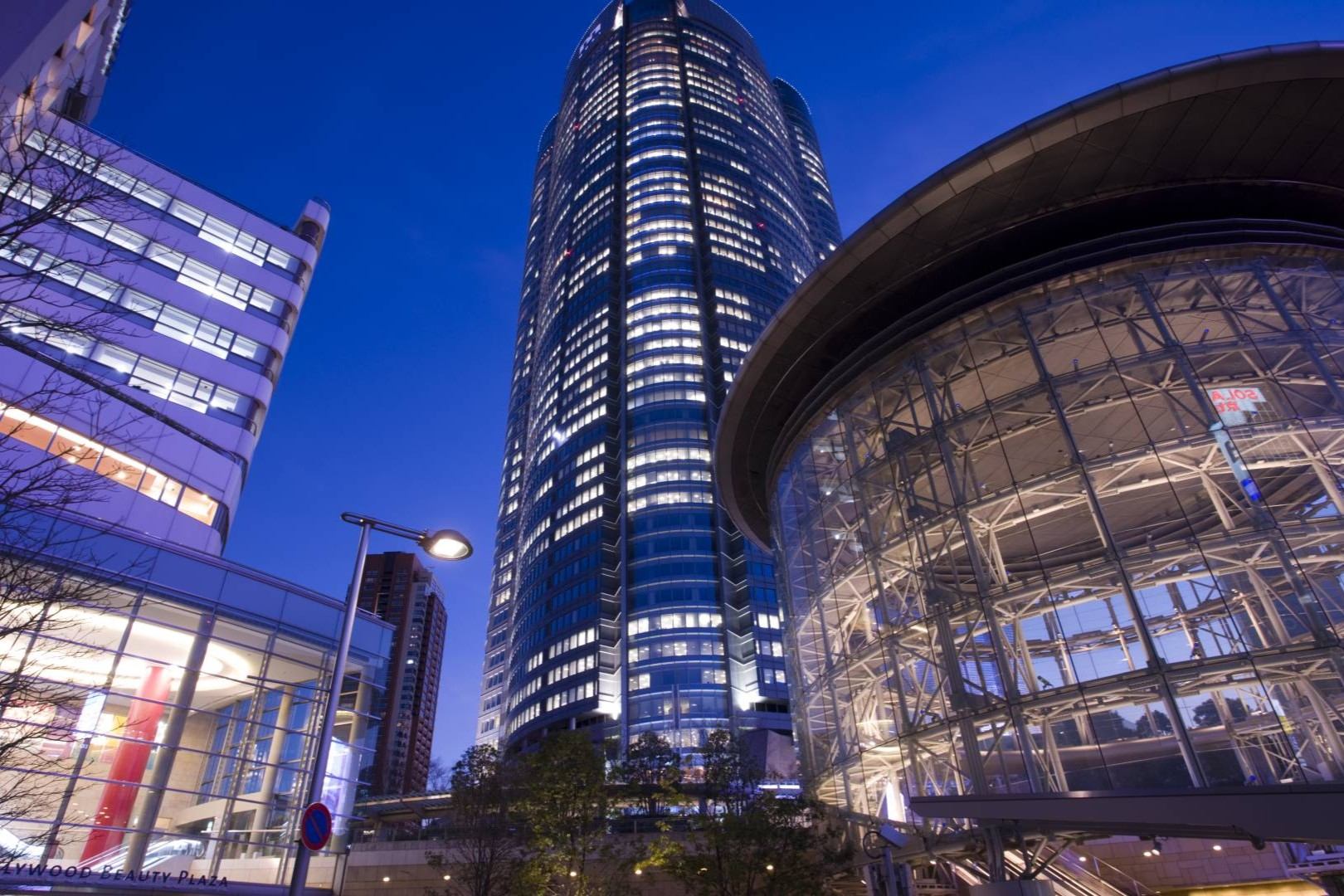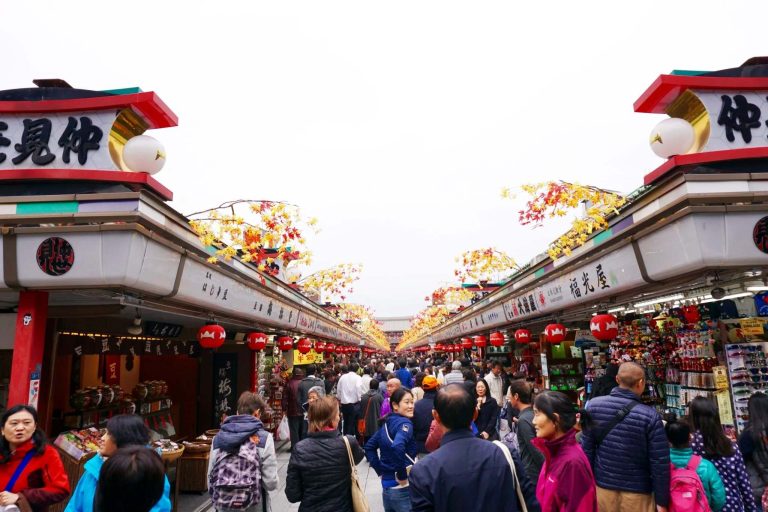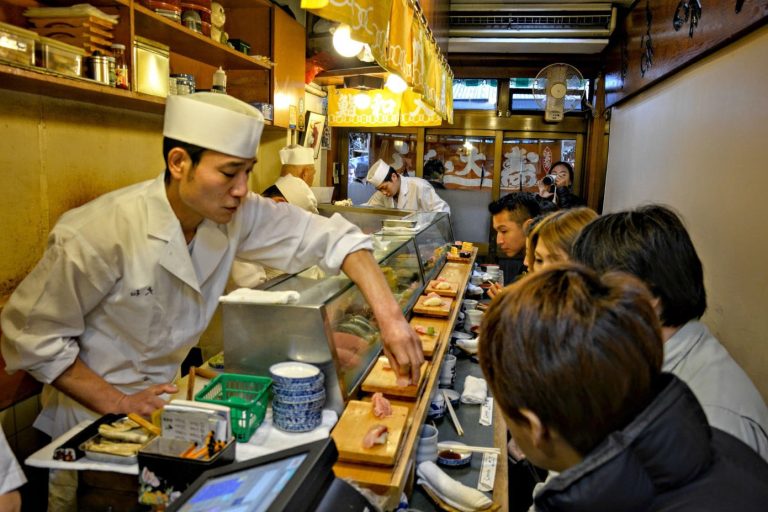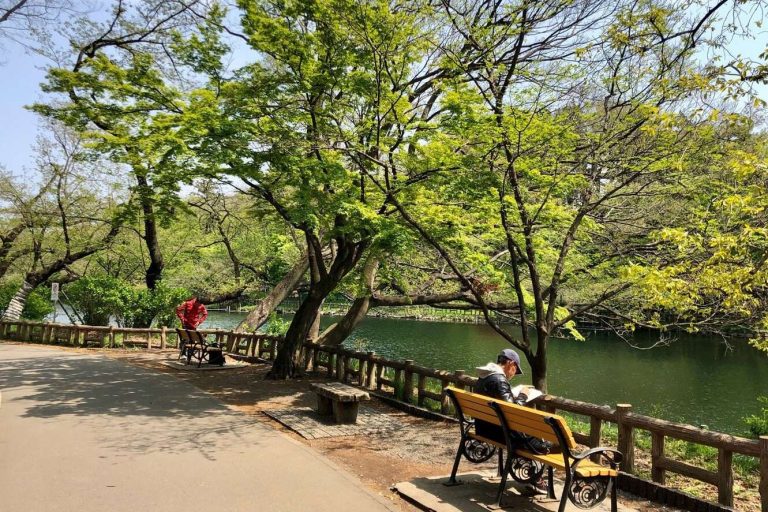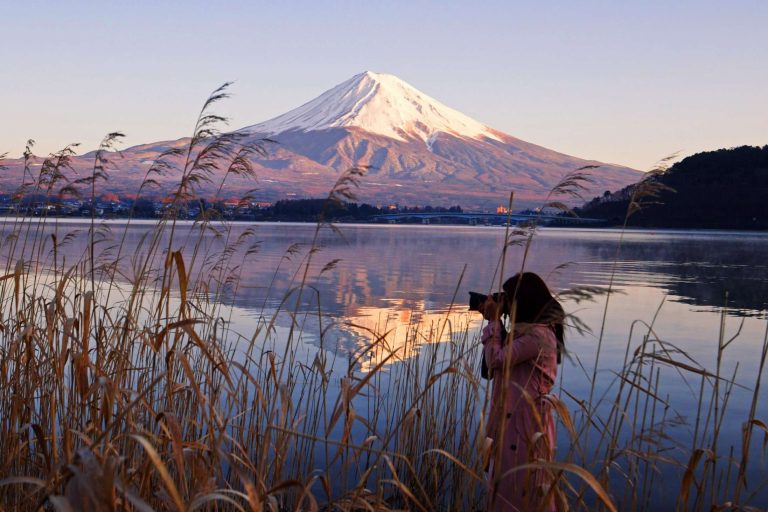Overview of Roppongi
Roppongi stands as one of Tokyo’s most fascinating districts, where sophisticated culture seamlessly blends with pulsating nightlife energy. This upscale neighborhood has evolved into a premier destination that attracts both art enthusiasts and night owls from around the world. Located in the heart of Minato ward, Roppongi offers an intriguing contrast to other Tokyo districts, maintaining its reputation as both a cultural hub and entertainment epicenter.
The area’s transformation over recent decades has been remarkable, shifting from a primarily residential zone to become one of Tokyo’s most internationally recognized districts. Today, visitors can experience world-class art exhibitions in the afternoon and dance until dawn in cutting-edge clubs, all within the same few blocks. This unique duality makes Roppongi particularly appealing to travelers seeking a comprehensive Tokyo experience that spans high culture and vibrant nightlife.
Geographical Location
Situated in central Tokyo’s Minato ward, Roppongi occupies a strategic position that makes it easily accessible from virtually anywhere in the metropolitan area. The district lies between the traditional neighborhoods of Akasaka and Azabu, creating a perfect bridge between old and new Tokyo. Its central location means visitors can easily explore nearby areas while using Roppongi as their base for both daytime cultural activities and evening entertainment.
Accessibility to Roppongi
Reaching Roppongi couldn’t be more convenient, with multiple train lines converging at Roppongi Station. The Hibiya and Oedo subway lines provide direct access, while nearby stations like Kamiyacho and Tameike-Sanno offer additional connectivity options. From both Narita and Haneda airports, travelers can reach the district within 60 minutes using various transportation combinations, making it an ideal first stop for international visitors.
Cultural Significance
Roppongi’s cultural importance extends far beyond its entertainment value. The district has become synonymous with Tokyo’s international character, hosting numerous embassies and serving as a meeting point for diverse communities. This multicultural atmosphere has fostered a unique creative environment where traditional Japanese aesthetics merge with global artistic influences, creating something entirely distinctive.
Historical Background
The area’s name literally translates to “six trees,” referencing six large zelkova trees that once stood prominently in the district. During the post-war era, Roppongi developed its international character due to its proximity to foreign embassies and military facilities. This historical foundation laid the groundwork for today’s cosmopolitan atmosphere, where multiple languages can be heard on every street corner and diverse cultural expressions flourish side by side.
Art Scene in Roppongi
Roppongi has established itself as Tokyo’s premier art destination, earning recognition as one of Asia’s most important cultural districts. The concentration of world-class museums, galleries, and cultural institutions creates an artistic ecosystem that rivals major international art capitals. This cultural density allows visitors to experience multiple exhibitions and artistic perspectives within walking distance, making art appreciation both convenient and comprehensive.
The district’s commitment to contemporary art is particularly noteworthy, with institutions regularly showcasing cutting-edge works alongside established masters. This balance between innovation and tradition reflects broader Japanese cultural values while maintaining relevance in the global art scene. The area’s artistic offerings extend beyond traditional museum spaces, with public art installations and temporary exhibitions creating an outdoor gallery atmosphere throughout the neighborhood.
Roppongi Art Night
This annual celebration transforms the entire district into an open-air art festival, typically held during spring when Tokyo’s weather is most pleasant. The event extends museum hours well into the night, allowing visitors to experience art in a completely different atmosphere. Street performances, light installations, and interactive exhibits create a festive environment that attracts hundreds of thousands of participants each year.
Art Triangle Overview
The famous Art Triangle consists of three major cultural institutions positioned within easy walking distance of each other. This strategic arrangement allows art enthusiasts to experience diverse collections and exhibitions in a single visit. Each institution maintains its unique character while contributing to the overall cultural richness of the district, creating a comprehensive artistic experience that few other neighborhoods worldwide can match.
Mori Art Museum
Perched high above the city in Roppongi Hills, this contemporary art museum offers both exceptional exhibitions and breathtaking Tokyo views. The museum’s focus on contemporary Asian and international artists provides visitors with fresh perspectives on current global artistic trends. Its location on the 52nd and 53rd floors creates a unique viewing experience where art and cityscape complement each other beautifully.
Suntory Museum of Art
Specializing in traditional Japanese arts and crafts, this museum provides essential context for understanding Japan’s artistic heritage. The collection includes exquisite examples of ceramics, textiles, lacquerware, and paintings that showcase centuries of Japanese artistic achievement. The museum’s approach to displaying traditional works in contemporary settings creates meaningful dialogues between past and present artistic expressions.
National Art Center
This architectural marvel houses rotating exhibitions rather than maintaining a permanent collection, ensuring that each visit offers something completely new. The building itself, designed by Kisho Kurokawa, represents a masterpiece of contemporary architecture with its flowing, wave-like facade. The center’s commitment to showcasing diverse artistic movements makes it an essential stop for anyone seeking to understand current global art trends.
Dining Options in Roppongi
Roppongi’s dining scene reflects the district’s international character, offering everything from authentic Japanese cuisine to innovative fusion creations. The concentration of high-end restaurants attracts food enthusiasts from around the world, while casual dining options ensure that every budget can find satisfying meals. This culinary diversity makes Roppongi an ideal destination for food tours and gastronomic adventures.
The area’s restaurant scene benefits from its international clientele, encouraging chefs to maintain high standards while experimenting with global flavors. Many establishments stay open later than typical Tokyo restaurants, catering to the district’s active nightlife crowd. This extended dining culture creates opportunities for leisurely meals that transition seamlessly into evening entertainment.
High-End Sushi Restaurants
Several world-renowned sushi establishments call Roppongi home, offering omakase experiences that rival the best in Tokyo. These restaurants typically require reservations well in advance and provide intimate counter seating where diners can observe master chefs at work. The quality of ingredients and preparation techniques represents the pinnacle of Japanese culinary artistry, making these dining experiences truly memorable.
French Cuisine Venues
Roppongi hosts numerous French restaurants ranging from casual bistros to Michelin-starred establishments. Many feature Japanese ingredients prepared using classical French techniques, creating unique fusion experiences. The wine selections at these venues are particularly impressive, with sommeliers who understand both French and Japanese palates, ensuring perfect pairings for every meal.
Casual Eateries
Beyond high-end dining, Roppongi offers numerous casual restaurants perfect for quick meals between activities. Ramen shops, yakitori stalls, and family-style restaurants provide authentic Japanese flavors at reasonable prices. These establishments often stay open late, making them ideal for post-nightlife meals or casual lunch breaks during art museum tours.
International Dining Chains
Familiar international restaurant chains maintain strong presences in Roppongi, providing comfort food options for international visitors. However, many of these chains offer Japan-exclusive menu items that provide interesting cultural fusion experiences. The presence of these familiar brands also makes Roppongi particularly welcoming for first-time visitors to Japan.
Unique Culinary Experiences
Specialty dining experiences in Roppongi include themed restaurants, cooking classes, and food tours that provide deeper cultural understanding. Some establishments offer traditional tea ceremony experiences alongside meals, while others focus on sake tasting paired with appropriate dishes. These unique offerings allow visitors to engage with Japanese food culture beyond simple dining.
Nightlife in Roppongi
Roppongi’s nightlife reputation extends far beyond Tokyo, attracting party-goers from across Asia and around the world. The district’s entertainment options range from intimate cocktail bars to massive dance clubs, ensuring that every nightlife preference finds satisfaction. This variety, combined with the area’s international atmosphere, creates a unique party scene that operates at a different pace than other Tokyo neighborhoods.
The nightlife culture here starts later and continues much longer than in other parts of the city, with many venues operating until sunrise. This extended schedule allows for leisurely evening progressions from dinner to drinks to dancing, creating complete night-out experiences. The international crowd means that English is widely spoken, making navigation easier for foreign visitors while maintaining authentic Japanese hospitality standards.
Popular Bars and Clubs
Establishments range from rooftop bars with stunning city views to underground clubs featuring international DJs. Many venues maintain dress codes and cover charges, particularly on weekends, but the quality of service and atmosphere typically justifies these requirements. The variety ensures that whether seeking craft cocktails, live music, or dance floors, appropriate venues exist within walking distance.
Live Performance Venues
EX THEATER ROPPONGI and similar venues host everything from international concerts to local band performances. These spaces often feature state-of-the-art sound systems and intimate settings that create memorable live music experiences. The programming includes both Japanese and international artists, reflecting the district’s cosmopolitan character while supporting local talent.
DJ and Dance Clubs
Roppongi’s club scene features both resident DJs and international guests spinning everything from electronic dance music to hip-hop. Many venues have multiple floors with different music styles, allowing party-goers to find their preferred atmosphere within single locations. The production values at top clubs rival those found in major international nightlife destinations.
Cultural Events and Nightlife
Special events often combine cultural programming with nightlife entertainment, such as late-night museum openings with DJ sets or art exhibition after-parties. These events create unique opportunities to experience both sides of Roppongi’s character simultaneously. The district’s cultural institutions often collaborate with entertainment venues to create these hybrid experiences.
Safety Tips for Nightlife
While Roppongi is generally safe, the concentration of nightlife venues requires standard urban precautions. Staying aware of surroundings, traveling in groups, and using legitimate transportation options ensures safe experiences. The district’s international police presence and well-lit streets contribute to overall security, but responsible behavior remains important for all visitors.
Shopping in Roppongi
Shopping in Roppongi offers experiences ranging from luxury brand boutiques to unique local artisan shops. The district’s two major complexes, Roppongi Hills and Tokyo Midtown, house comprehensive shopping environments that cater to diverse tastes and budgets. These developments integrate shopping with dining and entertainment, creating destination experiences rather than simple retail transactions.
The international character of Roppongi’s shopping scene means that customer service often includes English support, making purchases easier for foreign visitors. Many shops also offer tax-free shopping for tourists, providing additional value for international customers. The variety of available products spans from traditional Japanese crafts to cutting-edge fashion, ensuring that every shopping preference finds satisfaction.
Shopping Malls Overview
Both Roppongi Hills and Tokyo Midtown function as comprehensive lifestyle destinations rather than traditional shopping centers. These complexes integrate retail with cultural attractions, dining options, and entertainment venues, encouraging visitors to spend entire days exploring. The architectural design of both developments creates pleasant shopping environments with natural light and spacious layouts.
Luxury Brand Outlets
International luxury brands maintain flagship stores and boutiques throughout the district, often featuring Japan-exclusive products and limited editions. These shops typically offer personalized service and exclusive shopping experiences that justify their premium positioning. The concentration of luxury retailers makes Roppongi a preferred destination for high-end shopping expeditions.
Local Art and Craft Stores
Beyond international brands, numerous shops specialize in Japanese arts, crafts, and design objects. These establishments often feature works by local artists and traditional craftspeople, providing authentic cultural shopping experiences. The quality and uniqueness of available items make these shops particularly valuable for visitors seeking meaningful souvenirs or gifts.
Unique Souvenirs and Gifts
Specialty shops throughout Roppongi offer distinctive Japanese products that make memorable gifts or personal mementos. Items range from traditional crafts with contemporary twists to modern design objects that reflect current Japanese aesthetics. The district’s international character ensures that many shopkeepers can explain product backgrounds and cultural significance to foreign customers.
Cultural Institutions and Events
Beyond the major museums, Roppongi hosts numerous cultural programs and events that enrich the district’s artistic landscape. These activities range from temporary exhibitions to educational workshops, providing deeper engagement opportunities with Japanese and international culture. The frequency and variety of cultural programming ensure that repeat visitors always find new experiences.
Many cultural events specifically target international audiences, offering English-language programming and cultural context that enhances understanding and appreciation. This approach makes Roppongi’s cultural offerings particularly accessible to foreign visitors while maintaining authentic Japanese perspectives and values.
Mori Art Museum Activities
Beyond exhibitions, the museum offers lectures, workshops, and special events that provide deeper artistic engagement. These programs often feature artist talks, curator discussions, and hands-on creative activities suitable for various age groups. The museum’s educational initiatives help visitors understand contemporary art movements and their cultural significance.
Exhibitions at Suntory Museum of Art
Rotating exhibitions focus on different aspects of traditional Japanese culture, from seasonal celebrations to historical periods. These shows often include rare artifacts and artworks not typically available for public viewing. The museum’s approach to contextualizing traditional arts within contemporary settings helps visitors understand cultural continuity and change.
National Art Center Events
The center’s programming includes international exhibitions, symposiums, and cultural exchange events that reflect global artistic trends. These activities often coincide with major art fairs and cultural festivals, creating concentrated periods of exceptional cultural activity. The center’s role as a cultural bridge between Japan and other countries makes its programming particularly relevant for international visitors.
Community Art Programs
Local art initiatives and community programs provide opportunities for visitors to engage directly with Tokyo’s creative community. These activities might include artist studio visits, neighborhood art walks, or collaborative creative projects. Such programs offer authentic insights into Tokyo’s contemporary art scene beyond major institutional offerings.
Roppongi Hills and Tokyo Midtown
These two massive developments represent different approaches to urban planning and lifestyle integration, each offering unique experiences while contributing to Roppongi’s overall character. Both complexes successfully combine commercial, cultural, and residential functions, creating miniature cities within the larger district. Their architectural significance and comprehensive amenities make them destinations in themselves, worthy of extended exploration.
The rivalry between these developments has ultimately benefited visitors, as each strives to offer superior experiences and amenities. This competition has resulted in continuous improvements and innovations that keep both complexes fresh and relevant. The proximity of these two major developments creates a concentrated area of exceptional urban experiences unlike Tokyo nightlife and shopping districts such as Shibuya nightlife and shopping or Shinjuku nightlife and skyscrapers.
Overview of Roppongi Hills
This integrated development combines shopping, dining, cultural attractions, and residential spaces within a single complex. The centerpiece Mori Tower houses offices, the Mori Art Museum, and observation decks that provide spectacular city views. The complex’s design encourages exploration, with multiple levels and outdoor spaces that create varied experiences throughout different times of day.
Shopping and Dining at Tokyo Midtown
Tokyo Midtown offers a more refined shopping and dining experience, with carefully curated retailers and restaurants that emphasize quality over quantity. The complex’s design emphasizes natural materials and open spaces, creating a more relaxed atmosphere than typical urban shopping centers. The integration with the adjacent park provides additional recreational opportunities and scenic beauty.
Observation Decks and Views
Both complexes offer exceptional viewing opportunities, though each provides different perspectives on Tokyo’s urban landscape. The observation experiences include both indoor and outdoor viewing areas, allowing visitors to appreciate the city in various weather conditions. These vantage points provide excellent opportunities for photography and urban appreciation, particularly during sunset and evening hours.
Architectural Highlights
The architectural significance of both developments extends beyond their commercial functions, representing important examples of contemporary Japanese urban design. The integration of public and private spaces, the relationship between indoor and outdoor environments, and the incorporation of cultural facilities demonstrate innovative approaches to city planning. These design elements create environments that feel distinctly Japanese while maintaining international appeal.
Visitor Information
Planning a Roppongi visit requires consideration of the district’s dual nature as both cultural destination and nightlife hub. The area’s extensive offerings mean that visitors can easily spend multiple days exploring different aspects of the neighborhood. Understanding the rhythm of daily activities helps maximize experiences while avoiding crowds and ensuring availability at desired venues.
The international character of Roppongi means that many services cater specifically to foreign visitors, including multilingual support and cultural orientation assistance. This visitor-friendly approach makes Roppongi an excellent introduction to Tokyo for first-time visitors while offering enough depth to satisfy experienced travelers seeking new experiences.
Best Times to Visit
Roppongi offers different experiences throughout the day and across seasons, with each time period highlighting different aspects of the district’s character. Daytime visits focus on cultural attractions and shopping, while evening hours emphasize dining and nightlife. Spring and autumn provide the most comfortable weather for outdoor activities, though indoor attractions remain excellent year-round options.
Local Transportation Options
Beyond the main train connections, local transportation includes buses, taxis, and walking routes that connect major attractions. The district’s compact size makes walking feasible for most journeys, while the well-developed public transportation network provides easy access to other Tokyo areas. Many hotels and major attractions offer shuttle services that simplify navigation for visitors.
Accommodations in Roppongi
Hotel options range from luxury international chains to boutique properties that reflect the district’s sophisticated character. Many accommodations offer packages that include cultural attraction tickets or dining credits, providing additional value for visitors. The central location means that staying in Roppongi provides easy access to both local attractions and other Tokyo destinations, similar to luxury shopping and dining areas like Ginza luxury shopping and dining.
Tourist Tips and Recommendations
Successful Roppongi visits benefit from advance planning, particularly for high-end restaurants and cultural events that require reservations. Understanding local customs around tipping, dress codes, and business hours helps ensure smooth experiences. The district’s international atmosphere means that many standard Japanese etiquette rules are relaxed, but maintaining respectful behavior remains important for positive interactions.
Frequently Asked Questions
What is Roppongi known for?
Roppongi is known for its vibrant nightlife, cultural attractions, and world-class art museums.
How can I access Roppongi?
Roppongi is easily accessible via multiple train lines, including the Hibiya and Oedo subway lines, and is about 60 minutes from Narita and Haneda airports.
What dining options are available in Roppongi?
Roppongi offers a wide range of dining options, including high-end sushi restaurants, French cuisine, casual eateries, and international dining chains.
Are there safety concerns in Roppongi at night?
Roppongi is generally safe, but standard urban precautions are advisable, such as being aware of your surroundings and traveling in groups.
What cultural events take place in Roppongi?
Roppongi hosts various cultural events, including art exhibitions, workshops, and the annual Roppongi Art Night festival.
Discovering the Allure of Roppongi
Roppongi presents a unique blend of art, culture, and nightlife, making it an essential destination for anyone visiting Tokyo. From its world-class museums and diverse dining options to its exhilarating nightlife, Roppongi captures the essence of what makes the city vibrant and exciting. Whether you’re an art enthusiast, a foodie, or a night owl, Roppongi offers experiences that are both memorable and enriching.
